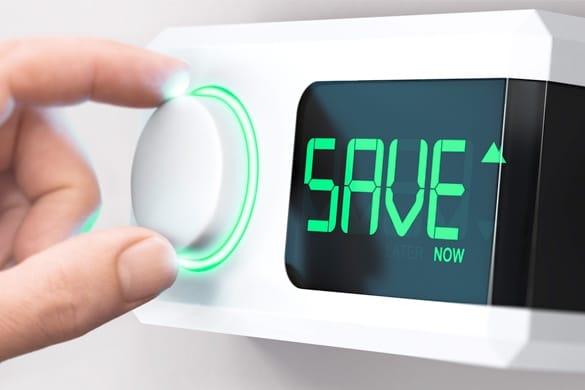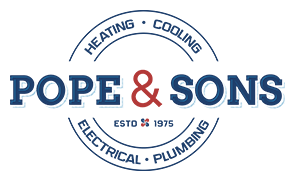What is a Heat Pump and How Does It Work
Feel free to contact us if you have any questions. We are here to help.
Air-Source Heat Pumps
Air-source heat pumps use the outdoor air as a source of thermal energy in heating mode, and as a sink to reject energy when in cooling mode. These types of systems can generally be classified into two categories:
Air-Air Heat Pumps. These units heat or cool the air inside your home, and represent the vast majority of air-source heat pump integrations in Canada. They can be further classified according to the type of installation:
- Ducted: The indoor coil of the heat pump is located in a duct. Air is heated or cooled by passing over the coil, before being distributed via the ductwork to different locations in the home.
- Ductless: The indoor coil of the heat pump is located in an indoor unit. These indoor units are generally located on the floor or wall of an occupied space, and heat or cool the air in that space directly. Among these units, you may see the terms mini- and multi-split:
- Mini-Split: A single indoor unit is located inside the home, served by a single outdoor unit.
- Multi-Split: Multiple indoor units are located in the home, and are served by a single outdoor unit.
Air-air systems are more efficient when the temperature difference between inside and outside is smaller. Because of this, air-air heat pumps generally try to optimize their efficiency by providing a higher volume of warm air, and heating that air to a lower temperature (normally between 25 and 45°C). This contrasts with furnace systems, which deliver a smaller volume of air, but heat that air to higher temperatures (between 55°C and 60°C). If you are switching to a heat pump from a furnace, you may notice this when you begin using your new heat pump.
Air-Water Heat Pumps: Less common in Canada, air-water heat pumps heat or cool water, and are used in homes with hydronic (water-based) distribution systems such as low temperature radiators, radiant floors, or fan coil units. In heating mode, the heat pump provides thermal energy to the hydronic system. This process is reversed in cooling mode, and thermal energy is extracted from the hydronic system and rejected to the outdoor air.
Operating temperatures in the hydronic system are critical when evaluating air-water heat pumps. Air-water heat pumps operate more efficiently when heating the water to lower temperatures, i.e., below 45 to 50°C, and as such are a better match for radiant floors or fan coil systems. Care should be taken if considering their use with high temperature radiators that require water temperatures above 60°C, as these temperatures generally exceed the limits of most residential heat pumps.
.
Major Benefits of Air-Source Heat Pumps
Installing an air-source heat pump can offer you a number of benefits. This section explores how air-source heat pumps can benefit your household energy footprint.
Efficiency
The major benefit of using an air-source heat pump is the high efficiency it can provide in heating compared to typical systems like furnaces, boilers and electric baseboards. At 8°C, the coefficient of performance (COP) of air-source heat pumps typically ranges from between 2.0 and 5.4. This means that, for units with a COP of 5, 5 kilowatt hours (kWh) of heat are transferred for every kWh of electricity supplied to the heat pump. As the outdoor air temperature drops, COPs are lower, as the heat pump must work across a greater temperature difference between the indoor and outdoor space. At –8°C, COPs can range from 1.1 to 3.7.
On a seasonal basis, the heating seasonal performance factor (HSPF) of market available units can vary from 7.1 to 13.2 (Region V). It is important to note that these HSPF estimates are for an area with a climate similar to Ottawa. Actual savings are highly dependant on the location of your heat pump installation.
Energy Savings
The higher efficiency of the heat pump can translate into significant energy use reductions. Actual savings in your house will depend on a number of factors, including your local climate, efficiency of your current system, size and type of heat pump, and the control strategy. Many online calculators are available to provide a quick estimation of how much energy savings you can expect for your particular application. NRCan’s ASHP-Eval tool is freely available and could be used by installers and mechanical designers to help advise on your situation.
How Does an Air-Source Heat Pump Work?
An air-source heat pump has three cycles:
- The Heating Cycle: Providing thermal energy to the building.
- The Cooling Cycle: Removing thermal energy from the building.
- The Defrost Cycle: Removing frost build-up on outdoor coils.
The Heating Cycle
During the heating cycle, heat is taken from outdoor air and “pumped” indoors.
- First, the liquid refrigerant passes through the expansion device, changing to a low-pressure liquid/vapour mixture. It then goes to the outdoor coil, which acts as the evaporator coil. The liquid refrigerant absorbs heat from the outdoor air and boils, becoming a low-temperature vapour.
- This vapour passes through the reversing valve to the accumulator, which collects any remaining liquid before the vapour enters the compressor. The vapour is then compressed, reducing its volume and causing it to heat up.
- Finally, the reversing valve sends the gas, which is now hot, to the indoor coil, which is the condenser. The heat from the hot gas is transferred to the indoor air, causing the refrigerant to condense into a liquid. This liquid returns to the expansion device and the cycle is repeated. The indoor coil is located in the ductwork, close to the furnace.

The ability of the heat pump to transfer heat from the outside air to the house depends on the outdoor temperature. As this temperature drops, the ability of the heat pump to absorb heat also drops. For many air-source heat pump installations, this means that there is a temperature (called the thermal balance point) when the heat pump’s heating capacity is equal to the heat loss of the house. Below this outdoor ambient temperature, the heat pump can supply only part of the heat required to keep the living space comfortable, and supplementary heat is required.
It is important to note that the vast majority of air-source heat pumps have a minimum operating temperature, below which they are unable to operate. For newer models, this can range from between -15°C to -25°C. Below this temperature, a supplemental system must be used to provide heating to the building.
The Cooling Cycle
The cycle described above is reversed to cool the house during the summer. The unit takes heat out of the indoor air and rejects it outside.
- As in the heating cycle, the liquid refrigerant passes through the expansion device, changing to a low-pressure liquid/vapour mixture. It then goes to the indoor coil, which acts as the evaporator. The liquid refrigerant absorbs heat from the indoor air and boils, becoming a low-temperature vapour.
- This vapour passes through the reversing valve to the accumulator, which collects any remaining liquid, and then to the compressor. The vapour is then compressed, reducing its volume and causing it to heat up.
- Finally, the gas, which is now hot, passes through the reversing valve to the outdoor coil, which acts as the condenser. The heat from the hot gas is transferred to the outdoor air, causing the refrigerant to condense into a liquid. This liquid returns to the expansion device, and the cycle is repeated.

During the cooling cycle, the heat pump also dehumidifies the indoor air. Moisture in the air passing over the indoor coil condenses on the coil’s surface and is collected in a pan at the bottom of the coil. A condensate drain connects this pan to the house drain.
The Defrost Cycle
If the outdoor temperature falls to near or below freezing when the heat pump is operating in the heating mode, moisture in the air passing over the outside coil will condense and freeze on it. The amount of frost buildup depends on the outdoor temperature and the amount of moisture in the air.
This frost buildup decreases the efficiency of the coil by reducing its ability to transfer heat to the refrigerant. At some point, the frost must be removed. To do this, the heat pump switches into defrost mode. The most common approach is:
- First, the reversing valve switches the device to the cooling mode. This sends hot gas to the outdoor coil to melt the frost. At the same time the outdoor fan, which normally blows cold air over the coil, is shut off in order to reduce the amount of heat needed to melt the frost.
- While this is happening, the heat pump is cooling the air in the ductwork. The heating system would normally warm this air as it is distributed throughout the house.
One of two methods is used to determine when the unit goes into defrost mode:
- Demand-frost controls monitor airflow, refrigerant pressure, air or coil temperature and pressure differential across the outdoor coil to detect frost accumulation.
- Time-temperature defrost is started and ended by a pre-set interval timer or a temperature sensor located on the outside coil. The cycle can be initiated every 30, 60 or 90 minutes, depending on the climate and the design of the system.
Unnecessary defrost cycles reduce the seasonal performance of the heat pump. As a result, the demand-frost method is generally more efficient since it starts the defrost cycle only when it is required.
Feel free to contact us if you have any questions. We are here to help.
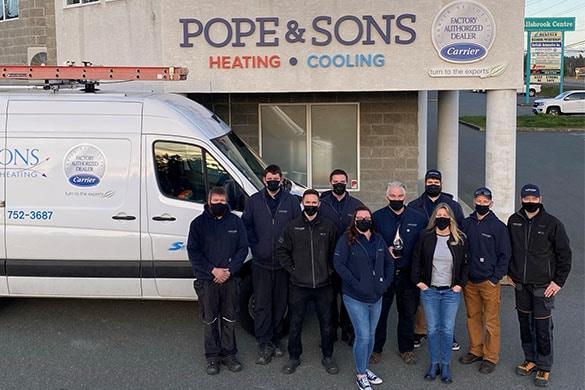
Who We Are
Responsive Service Like No Other
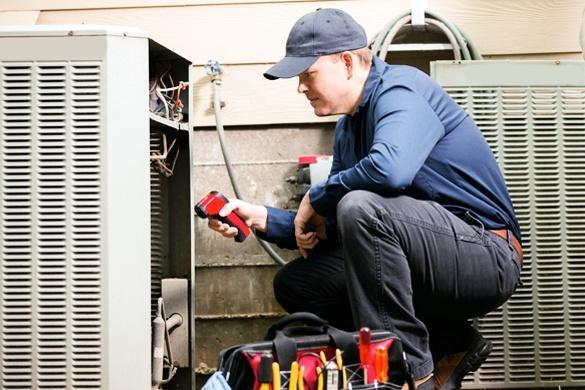
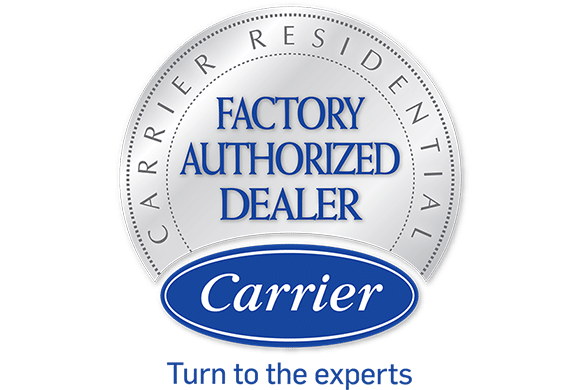
Quality Products Committed to Clean Energy
Winner of the prestigious President’s Award for 6 consecutive years

Industry-Leading Partners, Sustainable Products, Big Savings
Pope & Sons is proud to offer the highest quality heating and cooling products combined with the best rebate programs in BC.
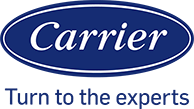

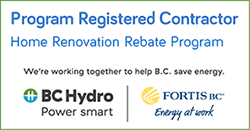
Get a Return on Your Energy Efficiency Investment
